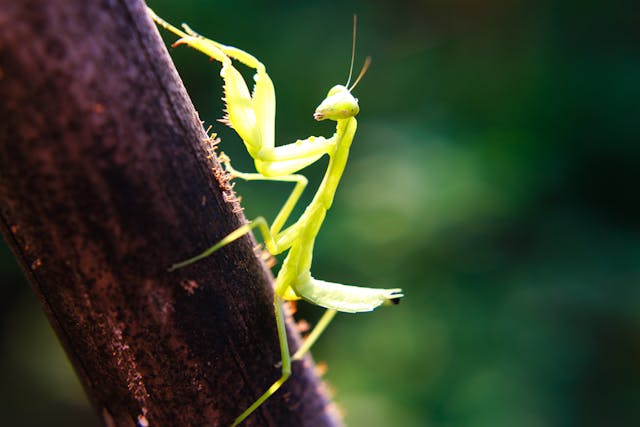
animals that eat their partners
The natural world is full of behaviors that may seem strange to us, and one of the most fascinating—and sometimes horrifying—is sexual cannibalism. This occurs when one mate, typically the female, kills and consumes the other partner, usually the male, during or after mating.
While this behavior may seem extreme, it is a survival strategy that serves several evolutionary purposes. In this article, we’ll explore the different animals that eat their partners and the possible reasons behind this behavior.
1. Praying Mantis
The praying mantis is one of the most well-known examples of sexual cannibalism in the animal kingdom. Female mantises are notorious for biting off the heads of their male counterparts during or after mating. Surprisingly, even after being decapitated, the male can continue the act of reproduction, ensuring that the female’s eggs are fertilized.
Researchers believe that sexual cannibalism in mantises serves two main purposes. First, it provides the female with vital nutrients that help her produce and lay eggs. Second, this behavior may allow females to choose the fittest males for reproduction, as only the most determined males will approach despite the threat of cannibalism.
2. Black Widow Spider
The black widow spider has become infamous for its sexual cannibalism, giving the species its name. Female black widows are significantly larger than males and will often eat their partner after mating. The male, in many cases, actively offers himself to the female, allowing her to consume him post-copulation.
This behavior benefits the female by providing her with a nutritious meal that supports her in laying eggs. The act also ensures that the male passes on his genes, even if it means his own death. In a sense, the male sacrifices himself to ensure the survival of his offspring, making the act of cannibalism a form of parental investment.
3. Australian Redback Spider
Closely related to the black widow, the Australian redback spider also practices sexual cannibalism. In this case, the male actively positions himself in such a way that he is more easily eaten by the female during mating. Similar to black widows, the male’s sacrifice increases the chances of his genetic material being passed on.
Interestingly, studies have shown that males who are eaten during mating are more successful in fertilizing the female’s eggs. Thus, being consumed may be an evolutionary tactic for maximizing reproductive success.
4. Anglerfish
The deep-sea anglerfish presents a different kind of partner consumption, but it is no less bizarre. Male anglerfish are much smaller than females and, when they find a mate, they latch onto the female with their sharp teeth. Over time, the male’s body fuses with the female, becoming little more than a pair of testes that the female can use to reproduce. Essentially, the male anglerfish is absorbed into the female’s body and loses all autonomy.
This extreme form of parasitism ensures that the female has a ready supply of sperm whenever she is ready to reproduce, a valuable strategy in the deep sea, where finding mates can be extremely difficult.
5. Orb-Weaving Spiders
In many orb-weaving spider species, sexual cannibalism is common. Like their black widow cousins, female orb-weavers often consume their male partners after mating. However, some males attempt to avoid this fate by offering “nuptial gifts” of prey to the female. These gifts may reduce the likelihood of the male being eaten, as the female focuses on consuming the prey instead of the male.
In this scenario, sexual cannibalism may be less about nourishment and more about mating success. Males that are not eaten are often less successful in passing on their genes, suggesting that cannibalism plays a role in ensuring reproductive success.
6. Octopuses
Some species of octopuses, such as the common octopus, exhibit sexual cannibalism, particularly when food is scarce. After mating, the larger female may attack and consume the male. In other cases, the male may escape, but the risk of being eaten is always present.
For octopuses, this behavior may be a way to ensure the survival of the female, especially since many species die shortly after reproducing. By consuming the male, the female gains valuable nutrients that help her survive long enough to lay and protect her eggs.
Why Do Animals Eat Their Partners?
Sexual cannibalism, though gruesome, can be explained through evolutionary biology. Here are some of the key reasons why this behavior occurs:
- Nutritional Gain. Females, especially in species where egg production requires significant energy, benefit from consuming males by gaining nutrients necessary for reproduction.
- Male Sacrifice. In some species, males sacrifice themselves to increase the chances of fertilizing the female’s eggs. This ensures the continuation of their genetic line.
- Mate Selection. Sexual cannibalism may serve as a form of mate selection. Where only the fittest, most determined males are willing to risk their lives to reproduce.
Final Thoughts
Sexual cannibalism is a fascinating and brutal survival strategy that can be found in various species, from spiders to mantises and even fish. Though it may seem strange from a human perspective, this behavior serves a critical role in ensuring reproductive success and species survival.
The next time you come across a praying mantis or a black widow spider, remember that their seemingly violent mating rituals are actually a testament to the incredible diversity and complexity of life in the animal kingdom.





